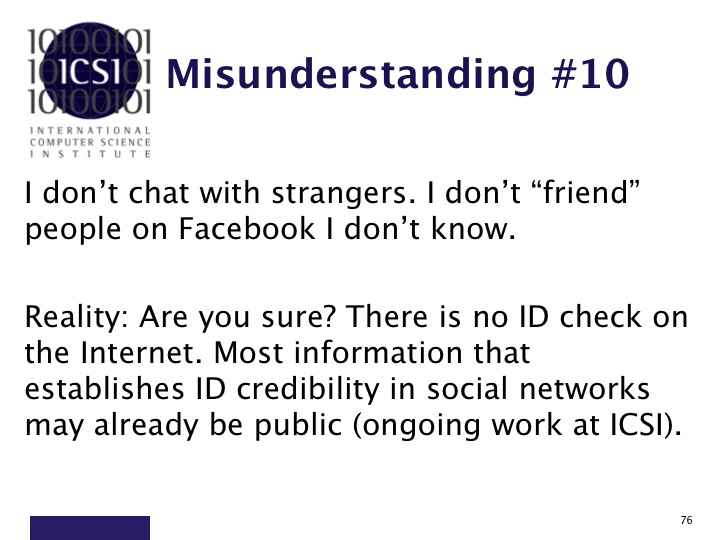Internet Privacy Misunderstandings, Part 10
This is the tenth and final post in a series debunking some common misunderstandings about online privacy. The images used in these posts have been adapted from a tutorial given by Gerald Friedland at ACM Multimedia in Nara, Japan in October. Read previous posts: one, two, three, four, five, six, seven, eight, nine.

You get a friend request. The name is something you remember from high school. The picture looks familiar. The account has pictures of the person on vacation and their relationship status is "in a relationship" with someone else whose name is also familiar. Obviously you know this person, right? Not necessarily - fake accounts on social networks are common, and while it may seem odd to fake being a real person, if enough information about a person is already online, it is easy to do. If you've followed this series of posts, you are probably already aware that a lot of information about people already exists online, even if that person didn't post any of it. So while you might know that your close friends on social networks really are the people they claim to be, if it's not someone you talk to frequently in real life, it's entirely possible the profile on Facebook (or other social networks) is someone who is only pretending to be that person. So you could be sharing information with people you don't know, even if all of your contacts are names that are familiar to you.
A very public example of this is the case of the Notre Dame football player who found out his girlfriend who he thought had survived a car accident only to die soon afterward from leukemia never existed. They met online, he'd seen her photo, and spoken to someone on the phone claiming to be her - but it was apparently an elaborate hoax. This New York Times blog piece explains the story.
